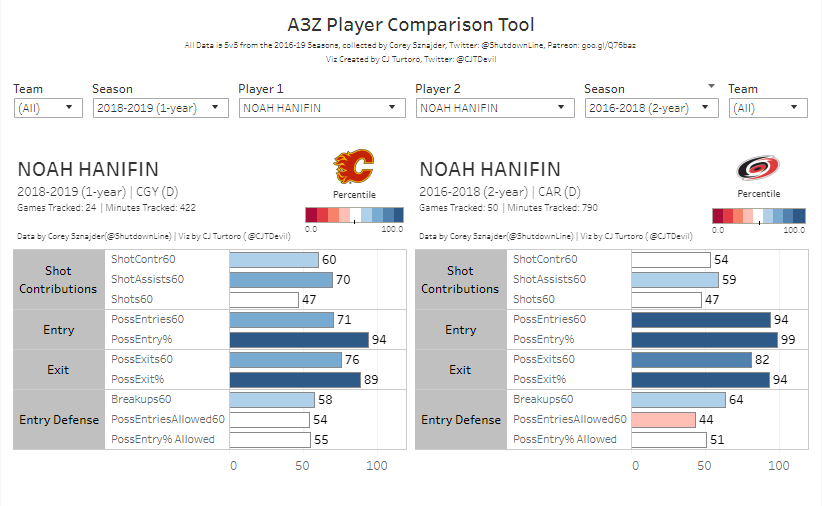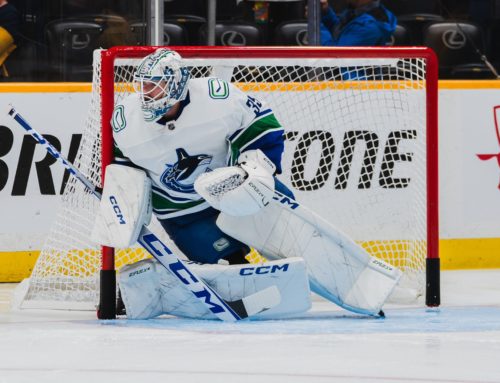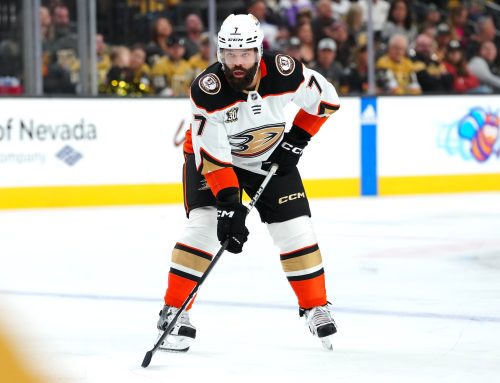There was a good read on our site a couple days ago from Mike Halbany, one of our newest writers. He was discussing Dominik Kubalik and what we could expect from him next year, given his incredible success and lack of track record.
One thing Mike brought up that I think is very important: Kubalik was earning a ton of PP time as the year wore on. I have concerns for Kubalik as well – namely his shooting percentage – but if he can play 3:30 a night on the PP, well, suddenly a lot of my concerns disappear. It'll be interesting to see how they use him in 2020-21.
*
Expected goals are a metric that shows us the value of a player – both offensively and defensively – based on shots taken by their team, or allowed by their team, and the value of each of those shots; a wrist shot from the slot does not have the same odds of turning into a goal as a wrist shot from the blue line. There are going to be issues with any kind of predictive models like this, given the future is inherently murky. All the same, it's one of the best measures we currently have for figuring out who is good at helping their team score and who is good at helping their team prevent scoring by the opposition.
Not all players are created equal, that's where individual player talent matters. When looking at expected goal differentials, players like Nathan MacKinnon and Elias Pettersson ranked lower in 2019-20 on a per-minute basis at even strength than names like Phillip Danault and Andrew Mangiapane. Despite the latter two names ranking higher than the former two, I'm not sure anyone would make that swap in fantasy leagues or in real life.
Over the last two seasons, per Evolving Hockey, there are 397 players with at least 1500 minutes at even strength. I thought it would be worth looking over some players who very good expected goals-for numbers that we might not think of in those terms.
Count me among those that thinks we're not going to get a completion to the 2019-20 regular season (playoffs are another matter) and that makes me kind of sad for Toffoli. For years, I had been clamouring for him to be on the top line with Anze Kopitar in Los Angeles, but he largely remained on the second and third lines. Well, he was traded to Vancouver, put alongside Pettersson, was skating 18 minutes a night and, quelle surprise, he was a point-per-game player while averaging nearly four shots per game. It's almost as if he was an excellent scoring winger who, for years, was stuck playing with unproven NHLers and aging stars as the Kings declined from their Stanley Cup apex. It's shocking, I know.
Anyway, over the last two seasons, largely played with those awful Kings teams, Toffoli is 10th in our sample in on-ice expected goals for per 60 minutes. The only forwards ahead of him are as follows: Andrei Svechnikov, Mark Stone, Tomas Tatar, Brendan Gallagher, Brady Tkachuk, Sebastian Aho, and Evgeni Malkin. The worst player on that list, by far, is Tatar, and he has six straight 20-goal seasons while averaging well over 60 points per 82 games over the last two seasons while skating just 16 minutes a night. (Just by the by, Tatar is one of just 13 players with at least a six-season streak of 20-goal seasons. The others are all among the elite scorers in the NHL. That should probably give a frame of reference for how good Tatar actually is. Another fun fact: over those six seasons, Tatar has the same WAR/60 as Alex Ovechkin, Patrick Kane, and William Karlsson.)
Toffoli is a free agent so it'll be interesting to see where he lands. It'll be hard to top 18 minutes a night alongside Elias Pettersson, but it's worth keeping in mind just how good he is. There are 30-goal, 60-point seasons with massive shot rates here if he lands in the right spot.
Count me among those who thought Hyman was simply a product of his line mates and ice time, and that it had been the case for years. Not that there's anything wrong with that; finding players who have good chemistry with your stars is pretty important. Chris Kunitz and Pascal Dupuis taught us that. But it's also easy to dismiss their talent just because of who they're skating with.
And there is merit to that. When looking at Hyman's on-ice numbers over the last few years when he hasn't been with either John Tavares or Auston Matthews are pretty bad. The good news is that neither Tavares nor Matthews are going anywhere anytime soon. As long as Hyman's play doesn't level off, and he hasn't given any indication of that, I have no problem assuming he can keep floating around 20 goals and over a hit per game. Just keep in mind that he was shooting nearly 20 percent this year, which is a big reason why his 82-game pace was well over 30 goals. I wouldn't expect him to keep shooting 19-20 percent year after year.
This is a very interesting name because there was a lot of hope for him after the Dougie Hamilton trade. Basically, Hanifin was included as a future replacement for Hamilton and though expecting him to turn into a top-10 defenceman in the NHL is a bridge much too far, he has put up excellent on-ice rates in his two-year tenure with the Flames.
It's important to note that this isn't a Hyman situation for Hanifin on the blue line. Over his two seasons with Calgary, he has 10 minutes (literally 10 minutes) with Mark Giordano as a partner. In other words, his elite goal-driving numbers are not a product of playing with a Norris-level defenceman (he's in the top-10 defencemen by expected goals for per 60 minutes over the last two seasons). And it makes a lot of sense that Calgary is very good at generating offence with Hanifin on the ice when you look at his play-driving numbers like zone entries and zone exits with possession. Here are his numbers from his first year in Calgary, as well as his final two years in Carolina (via CJ Turtoro’s viz):

When it comes to fantasy value, though, I'd exercise some caution. He's not a guy who hits or blocks shots (he's never had a season with at least 100 of either), he's not a guy who shoots much (one season out of five cracked two shots per game, and even then it was 2.09), and he probably won't get much PP time as long as Giordano is around. That means, for the foreseeable future, we have a guy who can drive offence, but he won't really rack up points with the lack of PP minutes, and with him not bringing much in most multi-cat stats (let's add penalty minutes to that), there's not a lot to offer. A guy who puts up 30 points and 130 shots and 80 hits and 80 blocks just isn't much.
All the same, should something happen to Giordano (decline or injury), he may be the next in line for the PP minutes. Though, I'm sure Rasmus Andersson may have something to do with that.
McAvoy, to me, is one of the most interesting players in fantasy for this reason: I don't think there's a bigger gap between what a player brings in real life (I legitimately believe he's a top-10 defenceman in the NHL right now) and what he brings in fantasy (I wouldn't draft him in the top-50 defencemen for 2020-21). I think the best comparison is that he's Bizarro Rasmus Ristolainen.
Anyway, I mention this because McAvoy is, I think, still overvalued in the fantasy game. Now, it would depend on the fantasy league, because had this season completed, McAvoy had a shot at both 150 blocks and 150 hits. Those are very stout totals. If you're in a league that doesn't count those categories, it would probably move him from a top-25 defenceman to a top-50 defenceman, or worse.
I'm not sure it's reasonable to expect him to get much better shooting-wise, either. He was playing 23 minutes a night and averaging about 1.5 shots per game. His rates have climbed very slowly since he entered the league, but they're still nowhere near acceptable for fantasy leagues.
There's also the question of whether it's in the team's best interest for him to shoot. We know defencemen taking shots from forwards is generally a bad idea, so McAvoy being able to move the puck and find his forwards for shots is probably optimal for the Bruins. It's just not optimal for us.
There are other guys I wanted to discuss like Richard Panik and Kevin Labanc, but we're starting to run long. Maybe for another day. I will just mention that I think Labanc could get back to his 55- to 60-point marks, but I'm not sure his game is well-rounded enough for him to keep playing 16-17 minutes a night. I think he's best used like 14 minutes a night on the third line. This is all conversation for the future, though. We're going to have a lot of time for conversations, methinks.





 FLA
FLA CHI
CHI NYR
NYR PIT
PIT L.A
L.A COL
COL CAR
CAR MIN
MIN STL
STL CBJ
CBJ NSH
NSH DAL
DAL
